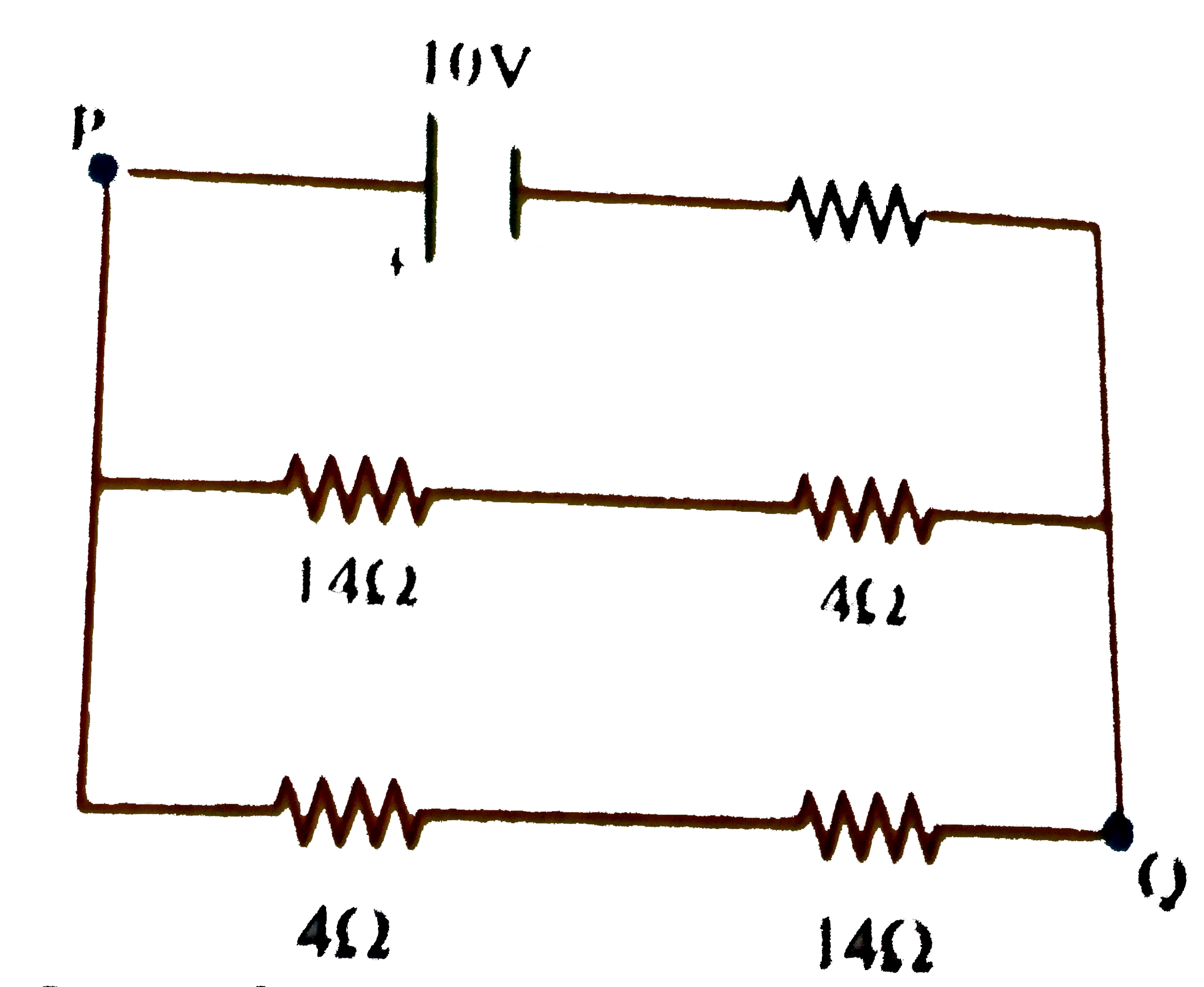Two points P and Q are maintained at the potentials of 10V and respectively. The work done in moving 100 electrons from P to Q is :
−2.24×10−16J
2.24×10−16J
−9.60×10−17J
9.60×10−17J
The correct Answer is:A
VP−VQ=WPQq
⇒WPQ=q(VP−VQ)
∴ WPQ=−100×(1.6×10−19)(10−(−4))
=−2.24×10−16J
Topper's Solved these Questions
- BOOK - MODERN PUBLICATIONCHAPTER - ELECTROSTATICSEXERCISE - LEVEL -II74videos
ELECTROSTATICS
- BOOK - MODERN PUBLICATIONCHAPTER - ELECTROSTATICSEXERCISE - LEVEL-III23videos
ELECTROSTATICS
- BOOK - MODERN PUBLICATIONCHAPTER - ELECTRONS & PHOTONSEXERCISE - RECENT COMPETITIVE QUESTIONS20videos
ELECTRONS & PHOTONS
- BOOK - MODERN PUBLICATIONCHAPTER - GRAVITATIONEXERCISE - Recent Competitive Questions8videos
GRAVITATION
Similar Questions
Two points P and Q are maintained at the potentials of 10V and -4V, respectively. The work done in moving 100 electrons from P to Q is:
View SolutionA body of mass 1g and carrying a charge 10−8C passes from two points P and Q. P and Q are at electric potentials 600 V and 0 V respectively. The velocity of the body at Q is 20 cms−1. It velocity in ms−1at P is
View Solution
Knowledge Check
- Question 1 - Select One
Two points P and Q are maintained at the potentials of 10V and -4V, respectively. The work done in moving 100 electrons from P to Q is:
A(a) 9.60×10−17JB(b) −2.24×10−16JC(c) 2.24×10−16JD(d) −9.60×10−17J - Question 2 - Select One
Two points P and Q are maintained at the potentials of 10 V and - 4 V respectively. The work done in moving 100 electrons from P to Q is
A9.60×10−17JB−2.24×10−16JC2.24×10−16JD−9.60×10−17J - Question 3 - Select One
The electric potential at. Point A is 20 V and B is – 20 . The work done by an external force in moving electron slowly from B to A is
A−6.4×10−18JB+6.4×10−18JC4×10−20JD−4×10−20J
Two charges - q and + q are located at points A(0, 0, -a) and B(0, 0, +a) respectively. How much work is done in moving a test charge from point P(7,0,0) to Q(-3,0,0) ?
View Solution(i) Can two equaipotential surfaces intersect each other ? Give reasons
(ii) Two charges −qand+q are located at point A (0, 0 -a) and B(0, 0, +a) respectively. How much work is done in moving a test charge from point P(7,0,0) to Q(−3,0,0) ?View Solution(i) Can two equaipotential surfaces intersect each other ? Give reasons
(ii) Two charges −qand+q are located at point A (0, 0 -a) and B(0, 0, +a) respectively. How much work is done in moving a test charge from point P(7,0,0) to Q(−3,0,0) ?View Solution(i) Can two equpotential surfaces intersect each other ? Give reason.
(ii) Two charges +qand−q are located at points A (0,0,−2)andB(0,0,2) respectively. How much work will be done in moving a test charge from point P(4,0,0) to (−5,0,0) ?View Solution
If in the circuit shown below, the internal resistance of the battery is 1Ω and VP and VQ are the potentials at P and Q respectively, the potential difference between te point P and Q isView Solution

